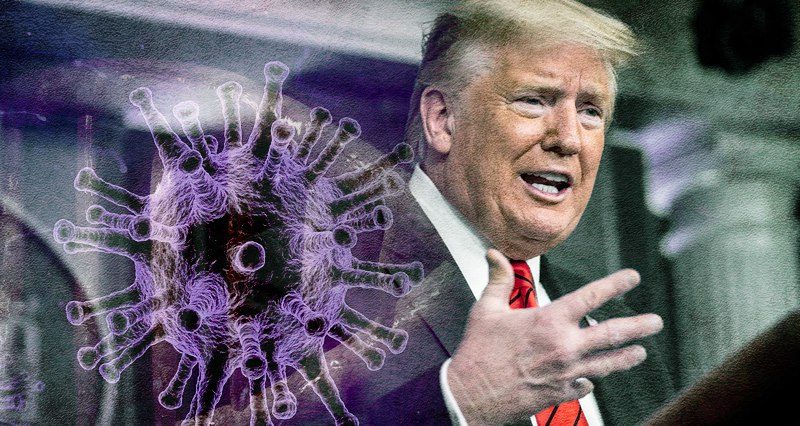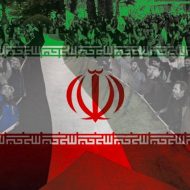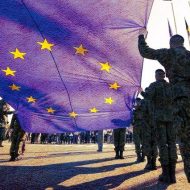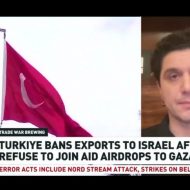At the moment, according to the WHO, the United States has over 160,698 infected, and over 3,000 have already died. New York, New Jersey and Connecticut have become the center of the epidemic outbreak in the United States. More than 52 000 cases and at least 728 deaths were reported in New York; more than 11 000 cases and 140 deaths were reported in New Jersey; while there have been 1,291 cases and 27 deaths were confirmed in Connecticut.
Why is the virus spreading so rapidly and why is quarantine not being enforced even in the most dangerous states?
Trump’s logic
President Donald Trump, an experienced businessman, sees America’s economic performance as the priority. In times of peace this can be a pragmatic view – but given the pandemic, the GDP strategy looks cynical and anti-human. Trump’s hand-off strategy has prompted serious criticism – not only by the Democrats, but also from the international community.
Trump said he had at least been thinking about a quarantine: “I’m thinking about that right now. We might not have to do it, but there’s a possibility that sometime today we’ll do a quarantine,” Trump told reporters at the White House Saturday. “Short-term, two-week on New York, probably New Jersey and certain parts of Connecticut.”
However, he later backtracked on these comments and said that after consulting with the White House Task Force and the governors of the three states, he decided that quarantine was not necessary. He asked the Centers for Disease Control to issue a travel consultation to be undertaken by the governors in consultation with the federal government.
Who’s responsible for quarantine?
The problem is not only Trump’s indecision, but also the question of who even has the authority to impose a quarantine. Making decisions at this level in the US is not as easy as it is China. The “democratic” system is at an impasse, and there is no way to act quickly and effectively.
Formally, federal law gave the Secretary of Health and Welfare the authority to take measures to prevent the spread of dangerous infections. Such authority has given the Secretary of Health and Human Services the power to detain people, to conduct medical examinations of people arriving in the US and even people traveling between states. However, these measures focus primarily on individuals.
Quarantining an entire region is more complex and the law is not so clear.
Trump, according to some lawyers, has no right to order all New Yorkers to stay in their homes, but he does have the right under the Public Health Service Act of 1944 to introduce a so-called sanitary cordon, which will prevent people from entering and leaving a region – in New York, for example.
A presidential order can be challenged in court – and the judges will either rule in favour of or against the administration. However, there is unlikely any precedent to help guide the ruling.
Trump vs state governors
Trump met with the governors of three states – New York, New Jersey and Connecticut – after which he announced that there would be no quarantine.
On the recommendation of the White House CoronaVirus Task Force, and upon consultation with the Governor’s of New York, New Jersey and Connecticut, I have asked the @CDCgov to issue a strong Travel Advisory, to be administered by the Governors, in consultation with the….
— Donald J. Trump (@realDonaldTrump) March 29, 2020
So far, there are little more than recommendations “to refrain from non-essential domestic travel for 14 days effective immediately” in the three states.
Domestic Travel Advisory: Due to extensive community transmission of #COVID19 in New York, New Jersey, and Connecticut, CDC urges residents to refrain from non-essential domestic travel for 14 days effective immediately. Read more: https://t.co/fDvmSvOHG8 pic.twitter.com/DXRzgMvXx1
— Dr. Robert R. Redfield (@CDCDirector) March 29, 2020
….Federal Government. A quarantine will not be necessary. Full details will be released by CDC tonight. Thank you!
— Donald J. Trump (@realDonaldTrump) March 29, 2020
Against the backdrop of this mess, Trump also faces the challenge of coordinating with American governors. Against the backdrop of the pandemic, there has been serious conflict with New York’s Democrat governor Andrew Cuomo.
Cuomo opposes imposing a quarantine, despite the appalling rise in numbers. Cuomo said he did not believe that Trump intended to quarantine the region, but suggested that he could sue if the administration did deliver on its promises – in which case it would be, he said, “a federal declaration of war”.
“A lockdown is what they did in Wuhan, China,” Cuomo said. “We’re not in China, and we’re not in Wuhan. I don’t believe it would be legal. I believe it would be illegal.“
We can criticize Trump, but the most cynical position is Cuomo’s. He notes that quarantine will cause an economic shock and could trigger a wave effect across the country, giving states the green light to close their borders.
“New York is the financial sector. You geographically restrict a state, you would paralyze the financial sector.”
Other governors aren’t fighting Trump so radically. For example, Connecticut Governor Ned Lamont said that the leaders of the three states had already implemented certain quarantine measures. Lamont said he wants to talk to the president directly about his comments and any further enforcement actions, “because confusion leads to panic.”
Ventilator crisis
As this political turmoil ensues, doctors have been left with one question: what to do when there are not enough places in hospitals, and how to handle the lack of artificial ventilation devices?
The battle for ventilators is already taking place in New York City – Trump demanded that Cuomo share the excess with other states, which he refused, citing the constant addition of new patients to hospitals which will soon need all the machines. The peak of the outbreak, according to Cuomo, will happen in about 21 days. Even Russia had to help Americans.
“Russia sent us a very, very large planeload of things,” Trump said.
Trump finally took drastic measures, although they came across as quite reasonable given the context of a pandemic. He forced large companies to temporarily reorient their operations toward the needs of the sick, such as ordering General Motors to make fans for coronavirus patients. He based his decision on the Korean Wartime Defense Production Act, which allows the president to force companies to produce products for national defense.
Trump said that “GM was wasting time” and action was needed to save American lives.
General Motors MUST immediately open their stupidly abandoned Lordstown plant in Ohio, or some other plant, and START MAKING VENTILATORS, NOW!!!!!! FORD, GET GOING ON VENTILATORS, FAST!!!!!! @GeneralMotors @Ford
— Donald J. Trump (@realDonaldTrump) March 27, 2020
Trump also gave the Departments of Defense and Homeland Security the authority to activate the National Guard and reservists to support the nationwide response to the coronavirus. The Army, Navy and Veterans Affairs Department have called on former service members to rejoin the force and help the military in the covid-19 response.
All these actions are a step in the right direction, yet , at the same time, people are openly gathering in public: even the New York subway is still runnings. Will the military even be able to help if people are getting infected on public transport?
Economic measures
Earlier, the House of Representatives adopted a stimulus package, the largest in US history by 2 trillion dollars. Trump said that the package, known as the coronavirus relief CARES Act, should “help small businesses stay open, help workers keep their jobs, and provide relief for distressed industries”.
The measure was signed the day after data showed that the number of applications for unemployment benefits last week rose to a record 3.3 million as businesses began closing.
President @realDonaldTrump signs coronavirus relief CARES Act!
pic.twitter.com/Ine2eOONs2— Team Trump (Text TRUMP to 88022) (@TeamTrump) March 27, 2020
The plan, which includes one-off payments to individuals, strengthening of unemployment insurance, additional funding for health care, as well as loans and grants to businesses to contain redundancies, was unanimously adopted by the Senate on Wednesday evening.
While these measures are important, they are also decorative and temporary. The increase in the number of patients could cause the medical system to collapse, at which point it will still be necessary to introduce quarantine – only with much greater losses. In a country where capitalism and liberalism have won, action is taken based on saving money, not human lives. With this delay, America is in danger of losing both.
Wyoming Rep. Liz Cheney warned: “There will be no normally functioning economy if our hospitals are overwhelmed and thousands of Americans of all ages, including our doctors and nurses, lay dying because we have failed to do what’s necessary to stop the virus.”
There will be no normally functioning economy if our hospitals are overwhelmed and thousands of Americans of all ages, including our doctors and nurses, lay dying because we have failed to do what’s necessary to stop the virus. https://t.co/AchwfXtuLi
— Liz Cheney (@Liz_Cheney) March 24, 2020
In fact, the division into supporters of quarantine and supporters of profits has already formed among politicians and citizens. Trump’s problem is that he cannot make up his mind and seems to go back and forth nearly everyday.
“One side will be accused of wanting to destroy the nation’s economy, the other of trying to murder millions of grandmas. And caught in the middle will be the medical experts and professionals who will be forced to cope with the fallout,” NBCNews writes.
However, the problem is not only Trump’s – the problem is the rotten American system and its reliance on broad social insecurity. Only the rich can afford to be healthy in America. As Alice Speri writes in” “Why I’d Rather Be in Italy for the Coronavirus Pandemic”:
“In the U.S., millions are uninsured or underinsured, people working multiple jobs can’t make rent, and workers making a few dollars an hour are told that if they miss a shift their hours will be cut… The fundamental inequality on which everything in this country is predicated will be exacerbated by this crisis in ways we cannot fathom.”
American democracy is an illusion that devours its own supporters when crisis arises. Meanwhile, China, with its strict, timely measures, has shown that a country must have the power to act quickly and the unity needed to rely on various sectors of society – from military and politicians to doctors. As a result, China has been able to save the population and quickly recover from its economic losses. The US calls the system that made that happen “totalitarianism”, but such words ring increasingly hollow.
Many are beginning to wonder if the real “totalitarianism” is a system where people are forcibly condemned to uncertainty and death amidst pandemic. The spread of the coronavirus in the US will undoubtedly make the answer clear in the coming weeks.









Leave a Reply